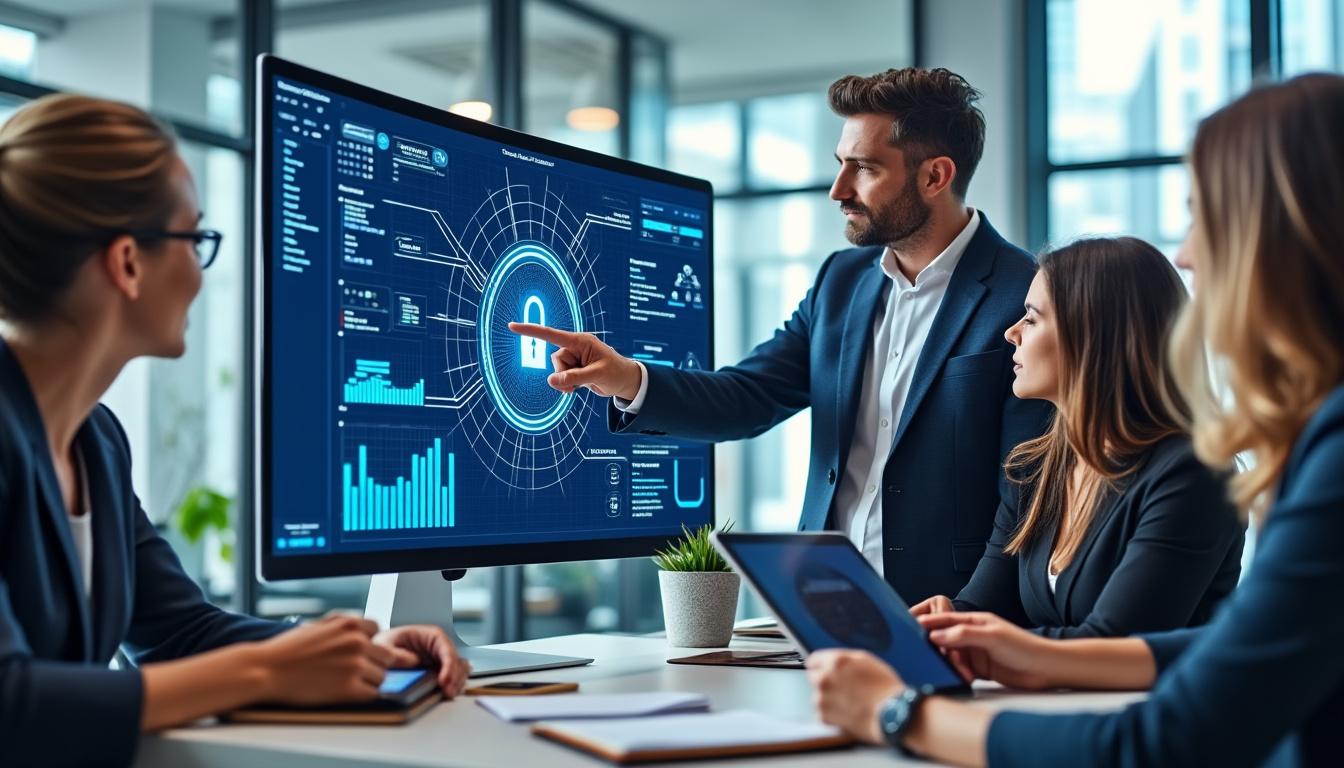In the escalating face of cyber threats that persistently evolve alongside technological advancements, navigating the labyrinth of cybersecurity requires clarity beyond myths and misconceptions. Not unlike the complexities in engineering or the nuances in software development, cybersecurity demands precision, informed strategies, and a grasp of factual realities. Misunderstandings about hackers, security measures, and protective tools not only hinder effective defenses but also expose enterprises and individuals to elevated risk levels. This detailed discourse explores common cybersecurity misconceptions, dismantling them through data-driven insights and practical examples backed by industry-leading entities like Norton, McAfee, Cisco, and CrowdStrike. Understanding these nuances sharpens defenses, reduces vulnerabilities, and arms organizations against the human and technological factors exploited by cyber adversaries.
Unveiling the Reality Behind the “Super Hacker” Myth in Cybersecurity
The popular culture trope of the omnipotent hacker—capable of breaching any system with just a keyboard—shapes many misconceptions in cybersecurity. Far from this dramatized depiction, real-world breaches rarely originate from lone “genius” programmers cracking complex code under pressure. Instead, they often exploit human vulnerabilities and systemic oversights. According to the Verizon 2025 Data Breach Investigations Report, approximately 60% of cyber breaches involve some form of human interaction, indicating fraud, manipulation, or error is primary, rather than purely technical hacking techniques.
This report, which analyzed over 22,000 security incidents, reveals attackers largely capitalize on leaked credentials combined with social engineering tactics, such as phishing emails or deceptive calls that coerce employees or users into revealing sensitive information. The simplicity of these approaches often surpasses advanced coding attacks in effectiveness.
Companies like Symantec and Trend Micro emphasize mandatory employee training to counteract social engineering methods that prey on human factors. Educating personnel on recognizing suspicious communications and enforcing strict credential hygiene limits these attack vectors.
Table: Breakdown of Common Cyberattack Initiators
| Attack Type | Percentage of Breaches | Example |
|---|---|---|
| Leaked Usernames and Passwords | 38% | Credential stuffing on employee accounts |
| Social Engineering | 22% | Phishing emails impersonating executives |
| Human Errors | 18% | Misconfigured cloud storage exposing data |
| Pure Technical Hacking | 12% | Exploit of unpatched software vulnerabilities |
| Other | 10% | Insider threats, physical break-ins |
To effectively protect infrastructure and data, cybersecurity strategies must prioritize human-centric risk mitigation alongside technology-focused defenses. Tools from vendors such as Fortinet and Bitdefender integrate behavioral analysis to detect anomalous activities frequently linked to human error or manipulation, exemplifying the blended approach to modern cybersecurity defenses.
Why Two-Factor Authentication Is a Vital Layer in Modern Cyber Defense
Despite growing awareness around cybersecurity, many still underestimate or overlook implementing two-factor authentication (2FA), mistakenly regarding it as an inconvenience or redundant security step. However, 2FA substantially elevates account security by requiring a second verification factor beyond just username and password — frequently an authenticator app notification, hardware key, or time-sensitive passcode.
The US Cybersecurity and Infrastructure Security Agency (CISA) highlights that accounts employing 2FA are 99% less likely to suffer hacks. This efficacy stems from 2FA’s ability to neutralize risks posed by leaked credentials since possession of a password alone no longer permits access without the second factor.
Although the security strength of 2FA variants differs—with app-based authenticators and physical security keys offered by brands like Yubico considered more robust than SMS-based codes—the consensus among cybersecurity professionals, including experts from Panda Security and Cisco, is that any 2FA is markedly preferable to none.
Implementing 2FA aligns with best-practice frameworks from reputable security solution providers such as Norton and McAfee, whose software suites often integrate seamless two-factor enrollment to bolster defenses at user endpoints.
Benefits of Two-Factor Authentication
- Blocks unauthorized access despite password exposure
- Reduces identity theft incidents
- Increases user accountability and traceability in systems
- Can be combined with biometric factors for enhanced security
Example: A mid-sized healthcare organization utilizing Bitdefender’s security infrastructure saw a 70% reduction in account compromise cases after mandating 2FA for all remote access points. These improvements prove critical, particularly with the rise of remote work configurations in 2025, which magnify exposure surfaces to credential-based attacks.
Dispelling the Illusion of VPNs as an All-Encompassing Privacy Mechanism
Virtual Private Networks (VPNs) have surged in popularity as tools marketed for privacy and security; however, these services are often overestimated in their protective capabilities. The Electronic Frontier Foundation cautions against treating VPNs as a panacea for all cyber threats, explaining their core function is to tunnel network traffic through another server, primarily encrypting data between the user and the VPN endpoint.
While VPNs can mitigate surveillance from Internet Service Providers (ISPs) and mitigate exposure on unsecured networks, users must acknowledge VPN providers themselves gain access to all browsing data routed through them. Trustworthiness and transparency of the VPN provider become pivotal, rapidly turning the choice into a tradeoff rather than a guaranteed shield.
For instance, enterprise solutions from Cisco and Fortinet often embed VPN components in their broader cybersecurity ecosystems, ensuring holistic controls govern access, segmentation, and traffic inspection beyond simple VPN tunnels.
Common misconceptions about VPNs
- VPNs provide complete anonymity online.
- They protect against malware or phishing attacks intrinsically.
- Using free VPN services is as safe as paid, reputable ones.
In reality, VPNs should form part of a layered security strategy rather than sole defenses. Combining VPN usage with endpoint protection solutions like those from CrowdStrike and Kaspersky ensures encrypted communication lines while preventing threat intrusions at device levels.
Those interested in enhanced privacy will also benefit from exploring specialized tools like the Tor Browser, which routes traffic through multiple nodes, substantially complicating tracking and surveillance. Learn more about this at this detailed overview.
The Crucial Role of Software Updates in Cybersecurity Risk Management
Delay or neglect of software updates remains a widespread oversight that significantly weakens cybersecurity resilience. These patches address known vulnerabilities, strengthening applications and operating systems against exploitation. When patches are delayed, attackers quickly adapt, crafting exploits targeting unpatched weaknesses, effectively rendering outdated software versions as prime targets.
Engaging with software providers—be they antivirus brands like Norton, Kaspersky, or platform giants equipped with security teams such as Trend Micro—emphasizes the urgency in timely patch management. The analogy of a skeleton key unlocking outdated locks underscores why security updates demand priority: leaving a system outdated is akin to leaving that key in every door without changing the lock.
Businesses often grapple with update-related downtime concerns or compatibility implications, yet cybersecurity frameworks from organizations like Cisco and Fortinet advocate automated patching pipelines to reduce manual intervention and maintain operational continuity.
Impacts of Delayed Updates
- Increased exposure to ransomware and zero-day attacks
- Regulatory non-compliance risks leading to potential fines
- Loss of customer trust after breach incidents
- Escalating remediation costs post-breach
An illustrative case: In 2024, a financial services firm faced a significant breach after overlooking patches for several months. The intruders exploited vulnerabilities in third-party libraries, bypassing perimeter defenses. Prompt updates could have effectively prevented this attack.
To stay ahead, integrating vulnerability intelligence platforms and frequent security audits—tools provided by the likes of CrowdStrike and Panda Security—into organizational policy frameworks can ensure continuous visibility and enforcement of update compliance.
Human Error as the Silent Threat: Why Training and Awareness Are Imperative
While technology tools from Symantec, Bitdefender, and McAfee provide essential shields, the human element persists as the most vulnerable cybersecurity facet. Misconfiguration, careless handling of credentials, and falling for phishing or social engineering attacks frequently enable breaches. In fact, human faults derived from inadequate awareness contribute to a considerable portion of incidents.
Training programs that simulate phishing attacks and educate employees on threat recognition create an environment wherein users evolve from potential weaknesses to active defenders. Crowdsourced threat intelligence and endpoint protection champions like CrowdStrike employ behavioral analytics to flag suspicious user activity, further reducing risk.
Companies investing in continuous education initiatives report measurable decreases in successful breach attempts. For instance, integrating quiz-based knowledge reinforcement tools inspired by platforms similar to Quizizz (see this resource) holds promise for engagement and retention of cybersecurity best practices.
Key elements of effective cybersecurity awareness
- Ongoing training on evolving cyberattack tactics
- Simulated phishing campaigns for practical experience
- Clear policies about credential management and device use
- Regular updates on organizational incident response procedures
These human-centric strategies reinforce technical controls from leading cybersecurity firms, crafting a holistic defense posture.


